

Discover more from Flashlight & A Biscuit
Hellfire & White Lightning
Georgia's moonshine history: murder, mayhem and speed, so much speed
Welcome to Flashlight & A Biscuit, my Southern culture/sports/music/food offshoot of my work at Yahoo Sports. Thanks for reading, and if you’re new around here, why not subscribe? It’s free and all.
The hills of North Georgia are thick with legends. Here’s the start of one.
A couple years back, I began work on a book with the working title of HELLFIRE & WHITE LIGHTNING, a history of crime, speed, moonshining and murder in Georgia. The project’s in temporary limbo, but since the history isn’t changing, I’ll share it with you here in several parts. Just make sure you buy the damn book whenever it comes out, too.
Part I: The wheelman
You’d hear him long before you’d see him.
The hum was low, below your hearing. And then it would get louder, and you’d realize it wasn’t your heart churning, it was an engine, roaring over Gold Creek or Gober Hill, three or four miles away.
It’d blow by the courthouse at blazing speed, tires squealing on the fresh asphalt. If you looked close, you might catch a glimpse of the driver as he roared by — eyes bright and flashing, the hint of a smile around his mouth — but no more than a glimpse.
You knew that no matter what happened next, that boy behind the wheel was living life to the absolute limit.
Back in the summer of 1941, there wasn’t much that passed for entertainment in the small towns of the Georgia foothills. There was talk of war in Europe, yes, but that seemed as far away as the high clouds on a hot summer day.
So when an infamous ‘39 black Ford coupe came roaring through the town square one afternoon, it was the most exciting thing folks had seen around there since … well, since the last time that coupe had barreled through.
The sheriff would sigh, turn on his siren, and begin chase. He knew how this would probably end — with the coupe fading far into the distance on U.S, 19, its engine far outclassing that of the government-issue wagon he drove. So on this one particular day, it was no small shock to see the coupe pull over.
As the sheriff approached, the car’s engine revved impatiently. Come on come on, it seemed to be saying, let’s get this over with. The sheriff sauntered in the way only Southern law enforcement officers can do, and when he got to the car’s window, he saw the driver grinning. The sheriff recognized him instantly — indeed, had known who it was from the moment he heard the coupe’s roaring engine. This was Lloyd Seay, aka “Lightning,” and if he was smiling, there had to be a reason for it.
“Well, Lloyd, here we are again,” the sheriff said.
“Reckon so,” Lloyd said, extending two $5 bills — the equivalent of about $175 in 2020s dollars — out his window.
“Dammit, son,” the sheriff seethed, “you ought to know by now the fine for speeding ain’t but five dollars.”
“Yeah,” Lloyd replied, “but I’m going to be in a hurry coming back, so I’m payin’ in advance.”
It’s a tale that’s reached legend status in north Georgia. The exact phrasing of the conversation between the officer and the driver varies depending on who’s telling the tale, and so does the locale. Every stop along U.S. 19 — Cumming, Alpharetta, Roswell — would love to claim the honor of being the town that Seay blazed through, but the truth is, he burned right through every single one of them.
Twenty-one years old that summer, Lloyd Seay was one of probably a hundred heavy-footed, wild-spirited young men who held the nickname “Lightning,” but he was the only one who really deserved the title. Drivers on the track or lawmen on the hunt, he outran them all.
In small-town Georgia in the early twentieth century, there wasn’t much for a young man with big dreams but little education to do but drive fast. And there weren’t a whole lot of opportunities to drive fast. One was to race cars, and Lloyd Seay did exactly that, turning laps in that coupe at Atlanta’s Lakewood Speedway.
Head just south of Atlanta on the Downtown Connector — the merged Interstates 75 and 85 — where, if there’s no traffic, you can hit speeds that would make Lloyd Seay smile. Get off at the Lakewood Avenue exit and travel east a few blocks, till you come to the entrance of what at the moment is known as Cellairis Amphitheater. It’s an outdoor concert venue, but that’s not what gives it historical significance.
The gates will almost surely be locked — unless, say, Taylor Swift is in town — but through the chainlink fence you can catch a glimpse of a stack of old concrete grandstands. They’re all that remains of what was once Lakewood Speedway, one of the earliest true race tracks in the Southeast.
Use a little imagination. Think about those stands, full of fans on a Saturday night. The access road that now runs right in front of the stands was once the straightaway. The tranche of houses across the small lake covers what was once turns 2 and 3.
Imagine what it must have been like in those days, the sound of screaming engines and the smell of oil and the taste of dirt and the feel of energy, so much energy in the air. Men died on this track, died horrible burning deaths, but others stood waiting for their turn, certain they’d succeed. Imagine watching Lloyd Seay in that black coupe, a huge number 7 painted on the side, turning lap after lap in the lead.
Now imagine leaving that track and driving 60 miles north, through Atlanta, through all the suburbs, till you’re in the piney woods and dark hollows of Dawsonville. This is moonshine country, and this is the kind of place you don’t want to be an outsider, not after dark, not any time at all.
Here, in these dark hollows, is where men make moonshine.
Part II: The moonshine
Moonshine — a blend of illegal whiskey so named because its distillers worked under cover of darkness, by the light of the moon, so that the law couldn’t see their smoke — is a visible, tactile, burn-your-throat link to the history of the United States.
The Irish and the Scots perfected the manufacture of whiskey. Where the French made brandy out of wine and the Dutch made gin, the Irish and the Scots learned to use grains like barley to manufacture a quick-to-market product. Those same Irish and Scots migrated to America, bringing their fierce independence with them … along with their recipes for whiskey.
Unlike, say, the fertile soil of the Mississippi Delta, the North Georgia dirt, red from iron deposits and thick with clay, wasn’t good for growing much of anything … except corn. It didn’t take these immigrants long to realize that corn, like barley, could make for some mighty fine whiskey, too.
Corn whiskey was largely a Southern drink; the North preferred rum as a result of the triangle trade — involving both sugar and slaves — that filled Northern ports. Whiskey wasn’t just a way to kill the pain of a long day or the fear of the unknown, it was a mindset and a way of life.
“Booze was food, medicine and companionship in the early days of America,” writes Eric Burns in Spirits of America: A Social History of Alcohol. “Alcoholic beverages ... would serve as an almost indispensable accompaniment to liberty: sparking the urge to separate from the motherland, igniting patriotism, stoking the passion for growth and prosperity ... as if freedom were an engine and spirits the fuel.”
The Irish and Scottish immigrants who took to the mountains, land similar to their ancestral homes, carved out a rough, tentative existence there. As Neal Thompson traces in Driving With The Devil, an exceptional history of NASCAR’s moonshine origins, these settlers brought with them their music — threads of which are still present today in country music — along with a love of storytelling and a bone-deep streak of independence and a distrust of outsiders. The laws that governed coastal towns didn’t much concern the people in the hills. A man held onto what he could for as long as he could, and believed he had the right to do as he pleased without the government butting in. That extended right on through the growing of corn for purposes other than food.
The government, however, had other ideas. Centuries before he dominated Broadway, Alexander Hamilton imposed a whiskey tax — 7 cents per gallon, an astronomical sum and a vast overreach of federal authority. The whiskey tax would fund both the American Revolution and the War of 1812, but it would also spur the creation of a thriving underground trade. Southerners who built the stills, blended the whiskey and bottled the product didn’t believe the government had any right to their proceeds, not in the 1700s and not in the 1900s. After Prohibition, the government levied another $2 tax — about $36 in 2020s dollars — on every gallon of alcohol. Vice had a high cost.
In the early 20th century, though, moonshiners didn’t just have to worry about the government. The church had its eye on whiskey as well. The influence of Protestant churches was so significant that even after Prohibition was repealed, swaths of counties across the South were dry, and some remain so to this day. No alcohol could be sold in these counties or, in the most authoritarian districts, even consumed.
But sin never vanishes. Like rainwater, it always finds a new avenue. The moonshiners kept right on cooking, risking lengthy prison sentences and life-shattering fines. Part of it was out of necessity, to feed their families in an era when legitimate jobs paid about 10 cents an hour. Part of it was a raised middle finger in the face of the establishment, whether governmental or theocratic. And part of it was the thrill of stepping over the line, of going where others wouldn’t.
The dank, dark hollows of north Georgia, eastern Tennessee and western North Carolina were fertile territory for the creation of moonshine. Creeks fed stills located deep in the woods, on land unfamiliar to any government agent. A code of silence, from grandmothers to schoolchildren, protected the moonshiners. An entire society sprang up dedicated to the cause of keeping outsiders out, and the whiskey flowing. They’d brew concoctions that had “flash speed” — bubbles that dissipated quickly into 85-proof whiskey — or “hoss eyes” — enormous bubbles, about 160 proof.
By the 1930s, these wizards knew exactly how to make moonshine without getting caught. They knew to cook on moonless nights, so the smoke wouldn’t be as visible. They knew to keep watch for agents of the Internal Revenue Service — so-called “revenuers” — so that they could break down and ditch the entire operation if needed. They could crank out all the product their thirsty customers demanded.
What they didn’t have was an effective distribution system. Markets down in Atlanta — particularly markets in the Black communities — thrived on moonshine, adored it, craved it. The challenge was getting the moonshine from those hills down into the city without drawing the attention of law enforcement.
When smuggling, you have a few choices. You can buy off law enforcement, but that depends on 1. Corrupt officers and 2. A steady flow of cash. Or you can sneak the goods past the eyes of law enforcement, using a scheme which only works until they catch you, then never works again.
One famous bit of moonshine trickeration involved shipping baked goods from Atlanta’s Edgewood Bakery up to the mountains and then back again. There was just one problem: there was no such thing as the “Edgewood Bakery.” The large truck was carrying not bread, but corn liquor.
Another scheme involved the creation of a full funeral — hearse and all — rolling down Georgia Highway 6, the bereaved family weeping in the hearse’s wake. Suspicion began to arise when onlookers observed that the grieving widow had also been the grieving widow in two previous processions.
Other bootleggers would wear a suit and tie, reasoning the law wouldn’t stop a well-dressed man. One even tried picking his nose constantly in view of police, hoping that sheer disgust would let him through.
Then there was the third option: just outrun the sons of bitches.
Part III: The daredevils
An entire class of young men grew up in the rural South in the 1920s and 1930s with a lust for speed, a fascination with this newfound machine called the automobile, and only a passing respect for the law. These men called themselves whiskey trippers, and they had one mission and one mission only: to deliver contraband from production source to customer base with a minimum of legal entanglement.
Moonshiners turned to these whiskey trippers — young daredevils learning their way around their car, their hills, their life. They’d grown up on these roads, and they knew them better than they knew their own hearts. Flaunting the law, wheeling at high speeds, making some money — what could be better in life?
“The surest way to get a ‘hillbilly’ to do something was to tell him it was against the law,” Paul Hemphill wrote in Wheels, a history of NASCAR, “such as, in this case, selling whiskey without paying taxes on it.”
The basics of speed are as simple as time itself: get to one spot faster than the other guy. You do this by a few ways, starting with your nerve. When it’s your freedom that’s on the line, you tend to find some more willingness in yourself to try stunts along narrow, winding mountain roads that your pursuers won’t match.
Speed alone wasn’t enough. You needed performance, and that’s where the mechanical genius of the South began to bloom. A driver would strip everything out of his car, right down to the bucket seat, to allow for more cargo space. He’d install new springs — to prevent the fully-loaded car from riding too low, a dead giveaway to watchful law enforcement — and he’d retrofit the engine with up to three carburetors to maximize performance.
Ingenuity ruled the day. When lawmen shot out radiators, whiskey-trippers installed steel shields. When revenuers deployed tongs on the front of their cars to grab trippers’ rear bumpers, the trippers simply began attaching the bumper to their car with cheap wire, allowing it to break away as the tripper sailed off down the highway.
They mastered the art of the bootlegger turn, a combination of brake, throttle, steering wheel and skid that allowed a car to go from full speed to a 180-degree turn in a matter of seconds. And in a worst-case scenario, they’d dump tacks or broken glass on the road, or hurl eye-searing smoke bombs made by soaking rags in moonshine, creosote and hot peppers.
Whiskey-trippers also learned skills behind the wheel that didn’t involve engineering alchemy. When the revenuers would attempt to ram them, the bootleggers would slow down, luring them in, then speed up at the last second, leaving the revenuers helplessly spinning their wheels. They learned how to cut curves in half by veering against the curve and then, as they passed the apex, whipping the wheel back into the curve to blaze straight out rather than with wheels turned. They’d work with a blocker — a slower car meant to stop up pursuit, a clog on a tiny two-lane road. (All of these techniques survive to this day, visible on any track where NASCAR runs.)
This wasn’t just a battle of whiskey-trippers against the law, though. The entire community supported the bootleggers. Farmers would set off sticks of dynamite or fire guns in the air to let bootleggers know the law was nearby. Listen closely on a moonless night, and you might hear a woman three farms over calling out “Heeeeahh Nellie!”, seemingly beckoning her cows home. Her cows were safe; she was just warning drivers of the presence of revenuers.
Bootlegging involved matters of physics as well as courage. One gallon of whiskey weighed about six pounds, the jar holding it, another pound or two. Stuffing more than 120 gallons of whiskey, wrapped in blankets, into a stripped-down coupe meant that a 3,000-pound car going 80 miles an hour on winding roads was carrying nearly a half-ton of contraband. Bootleggers could and did die when their cars overturned and the whiskey and ignited.
“He left the road at 90, that’s all there is to say,” Robert Mitchum sang in the theme song to “Thunder Road,” a 1958 movie about the bootlegging trade. “The devil got the moonshine and the mountain boy that day.”
Risks or not, throughout the 1930s the hills around Dawsonville hummed with stills, whiskey-trippers and revenuers. The two-lane Highway 9 was “hot with law every night,” as one old Dawsonville hand once put it. During the 13 years of Prohibition, federal agents busted 340,000 stills and arrested just under a million men. Georgia led the nation in both categories.
More ominously, 126 federal agents were killed in Georgia during the height of the moonshine era. This was dangerous business, and the men who brewed their spirits were hard men. They would protect what was their own, no matter what the cost.
What would compel these men to take such risks? Money, to start. In those days, unskilled laborers earned 40 cents an hour, or $20 a week — a little over $400, in 2020s dollars. A whiskey-tripper could double that in one Dawsonville-to-Atlanta run, and could make two or three trips a night. A single good week of moonshining earned a whiskey-tripper enough to buy a new Model A Ford. A little creativity and daring, and good whiskey-trippers could bank up to a thousand dollars a week — $20,000 in present dollars — which was good money …
… if they lived long enough to spend it.
Hellfire & White Lightning, Part II: The daredevil choir boy
Hellfire & White Lightning, Part III: Sugar and blood
Thanks for reading, friends. Enjoy the weekend, perhaps with a formerly-illegal beverage, and we’ll see you right back here next week …
—Jay
References:
“Driving With The Devil,” Neal Thompson, 2007
”Return to Thunder Road,” Alex Gabbard, 1992
”Wheels,” Paul Hemphill, 1997
This is issue #85 of Flashlight & A Biscuit. Check out all the past issues right here. Feel free to email me with your thoughts, tips and advice. If you’re new around here, jump right to our most-read stories, or check out some of our recent hits:
The joy of the perfect college bar
Dolly Parton, Dale Earnhardt and Shakespeare: Fun with Artificial Intelligence
Why Atlanta’s Varsity has the best burger ever. No, I’m serious.
Could you survive a Waffle House brawl?
What does “Flashlight & A Biscuit” mean, anyway?
If you dig this newsletter, share it with your friends. Invite others to the party, everyone’s welcome.
Subscribe to Flashlight & A Biscuit
Kick back with some tales of Southern culture, sports, food and music from Jay Busbee. Grill's already hot; drinks are on ice. Pull up a chair.




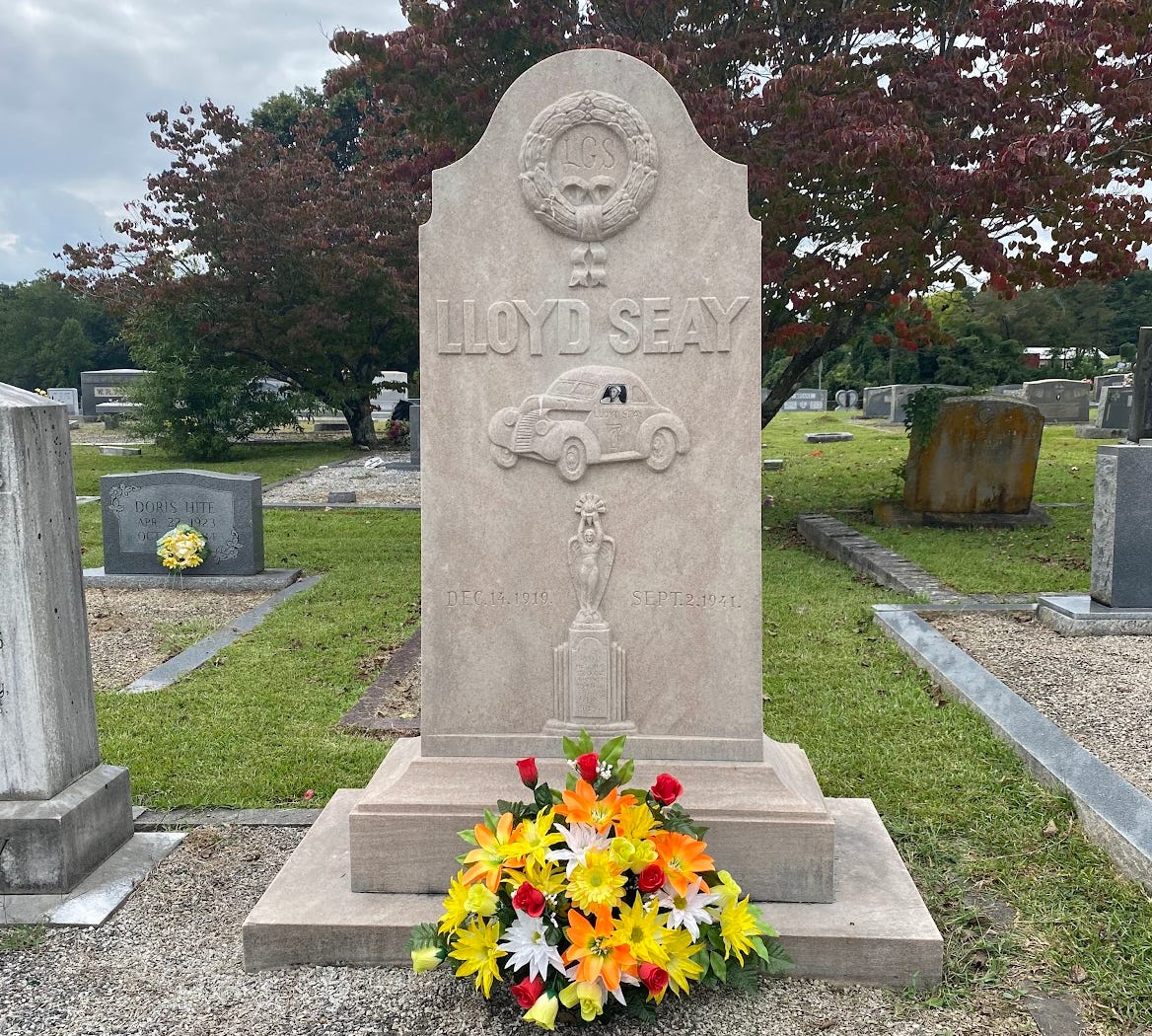

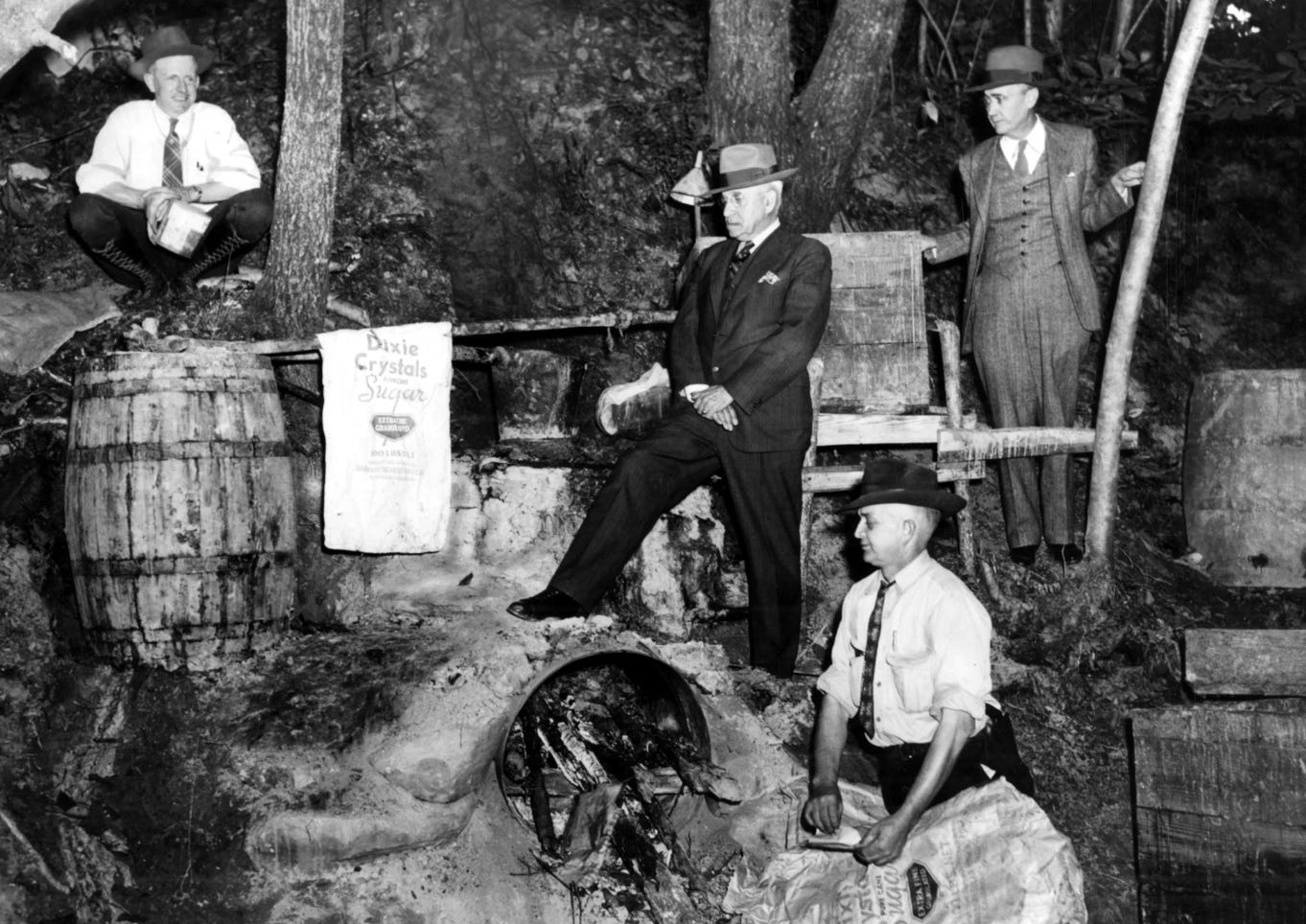
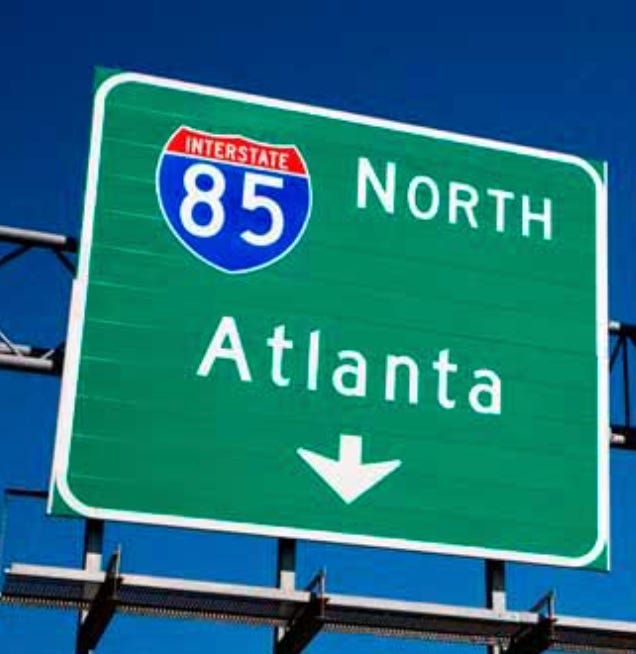





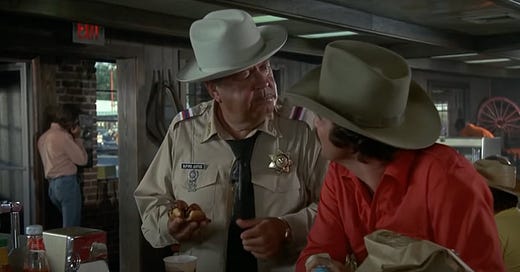




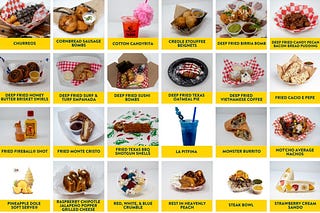
Excellent writing again Jay ! Hope You finish Your book. Merry Christmas 🎄 to You and Yours ! God Bless.